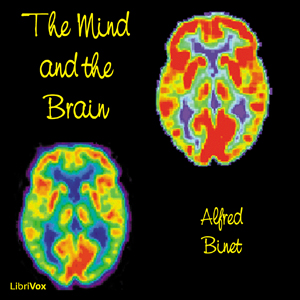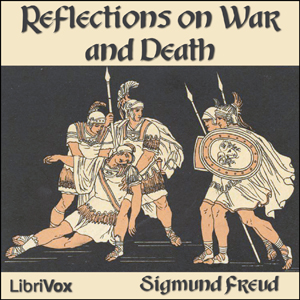- Translator's Preface
- Foreword
- Introduction
- Chapter 1 The Problem of Types in the History of Classical and Medieval Thought, 1: Psychology in the Classical Age: The Gnostics, Tertullian, and Origen
- Chapter 1.2: The Theological Disputes of the Ancient Church
- Chapter 1.3: The Problem of Transubstantiation
- Chapter 1.4 Nominalism and Realism intro and (a) The Problem of the Universalia in the Classical Age
- Chapter 1.4 (b): The Universalia Problem in Scholasticism
- Chapter 1.4 (c): Abelard's Attempt at Conciliation
- Chapter 1.5: The Holy Communion Controversy between Luther and Zwingli
- Chapter 2 Schiller’s Ideas upon the Type Problem, 1: Letters on the Msthetic Education of Man, (a) The Superior and the Inferior Functions, Part 1
- Chapter 2 Schiller’s Ideas upon the Type Problem, 1: Letters on the Msthetic Education of Man, (a) The Superior and the Inferior Functions, Part 2
- Chapter 2.2: A Discussion on Naive and Sentimental Poetry
- Chapter 3: The Apollonian and the Dionysian
- Chapter 4 The Type Problem in the Discernment of Human Character, 1: General Remarks upon Jordan's Types
- Chapter 4.2 Special Description and Criticism of the Jordan Types, (a) The Introverted Woman (the more-impassioned woman), and (b) The Extraverted Woman (the less-impassioned woman)
- Chapter 4.2 Special Description and Criticism of the Jordan Types, (c) The Extraverted Man, and (d) The Introverted Man
- Chapter 5 The Problem of Types in Poetry - Carl Spitteler’s Prometheus and Epimetheus, 1: Introductory Remarks on Spittelers Characterization of Types
- Chapter 5.2: A Comparison of Spitteler’s with Goethe's Prometheus
- Chapter 5.3 The Significance of the Reconciling Symbol
- Chapter 5.3 (a) The Brahmanic Conception of the Problem of the Opposites
- Chapter 5.3 (b) Concerning the Brahmanic Conception of the Reconciling Symbol
- Chapter 5.3 (c) The Reconciling Symbol as the Principle of Dynamic Regulation
- Chapter 5.3 (d) The Reconciling Symbol in Chinese Philosophy
- Chapter 5.4 The Relativity of the Symbol (a) The Service of Woman and the Service of the Soul, Part 1
- Chapter 5.4 (a) The Service of Woman and the Service of the Soul, Part 2
- Chapter 5.4 (b) The Relativity of the Idea of God in Meister Eckehart, Part 1
- Chapter 5.4 (b) The Relativity of the Idea of God in Meister Eckehart, Part 2
- Chapter 5.5 The Nature of the Reconciling Symbol in Spitteler, Part 1
- Chapter 5.5 The Nature of the Reconciling Symbol in Spitteler, Part 2
- Chapter 6 The Type Problem in Psychiatry, Part 1
- Chapter 6 The Type Problem in Psychiatry, Part 2
- Chapter 7 The Problem of Typical Attitudes in Aesthetics, Part 1
- Chapter 7 The Problem of Typical Attitudes in Aesthetics, Part 2
- Chapter 8 The Problem of Types in Modern Philosophy, 1: William James' Types
- Chapter 8.2: The Characteristic Pairs of Opposites in James' Types, Part 1
- Chapter 8.2: The Characteristic Pairs of Opposites in James' Types, Part 2
- Chapter 8.3: General Criticism of James' Conception
- Chapter 9 The Type Problem in Biography, Part 1
- Chapter 9 The Type Problem in Biography, Part 2
- Chapter 10 General Description of the Types, A: Introduction
- Chapter 10 B The Extraverted Type, (I) The General Attitude of Consciousness
- Chapter 10 B (II) The Attitude of the Unconscious
- Chapter 10 B (III) The Peculiarities of Basic Psychological Functions in the Extraverted Attitude, 1: Thinking
- Chapter 10 B (III) 2: The Extraverted Thinking Type
- Chapter 10 B (III) 3. Feeling, and 4. The Extraverted Feeling Type
- Chapter 10 B (III) 5. Recapitulation of Extraverted Rational Types
- Chapter 10 B (III) 6. Sensation, and 7. The Extraverted Sensation Type
- Chapter 10 B (III) 8. Intuition, and 9. The Extraverted Intuitive Type
- Chapter 10 B (III) 10: Recapitulation of Extraverted Irrational Types
- Chapter 10 C The Introverted Type, (I) The General Attitude of Consciousness
- Chapter 10 C (II) The Unconscious Attitude
- Chapter 10 C (III) Peculiarities of the Basic Psychological Functions in the Introverted Attitude, 1: Thinking
- Chapter 10 C (III) 2: The Introverted Thinking Type
- Chapter 10 C (III) 3. Feeling, and 4. The Introverted Feeling Type
- Chapter 10 C (III) 5. Recapitulation of Introverted Rational Types
- Chapter 10 C (III) 6. Sensation, and 7. The Introverted Sensation Type
- Chapter 10 C (III) 8. Intuition, 9. The Introverted Intuitive Type, and 10. Recapitulation of Introverted Irrational Types
- Chapter 10 C (III) 11. The Principal and Auxiliary Functions
- Chapter 11 Definitions, Part 1
- Chapter 11 Definitions, Part 2
- Chapter 11 Definitions, Part 3
- Chapter 11 Definitions, Part 4
- Chapter 11 Definitions, Part 5
- Chapter 11 Definitions, Part 6
- Chapter 11 Definitions, Part 7
- Chapter 11 Definitions, Part 8
- Chapter 11 Definitions, Part 9
- Chapter 11 Definitions, Part 10
- Chapter 11 Definitions, Part 11
- Chapter 11 Definitions, Part 12
- Chapter 11 Definitions, Part 13
- Chapter 11 Definitions, Part 14
- Chapter 11 Definitions, Part 15
- Chapter 11 Definitions, Part 16
- Chapter 11 Definitions, Part 17
- Conclusion
Ever wondered if there is any "theoretical basis" for the well-known Myers–Briggs Type Indicator Personality Test? In this groundbreaking work of typology, Jung proposes three key dichotomies - extraversion/introversion, sensation/intuition, as well as thinking/feeling - as an attempt to reconcile the differing theories of Sigmund Freud and Alfred Adler. - Summary by Cao Yuqing
There are no reviews for this eBook.
There are no comments for this eBook.
You must log in to post a comment.
Log in











